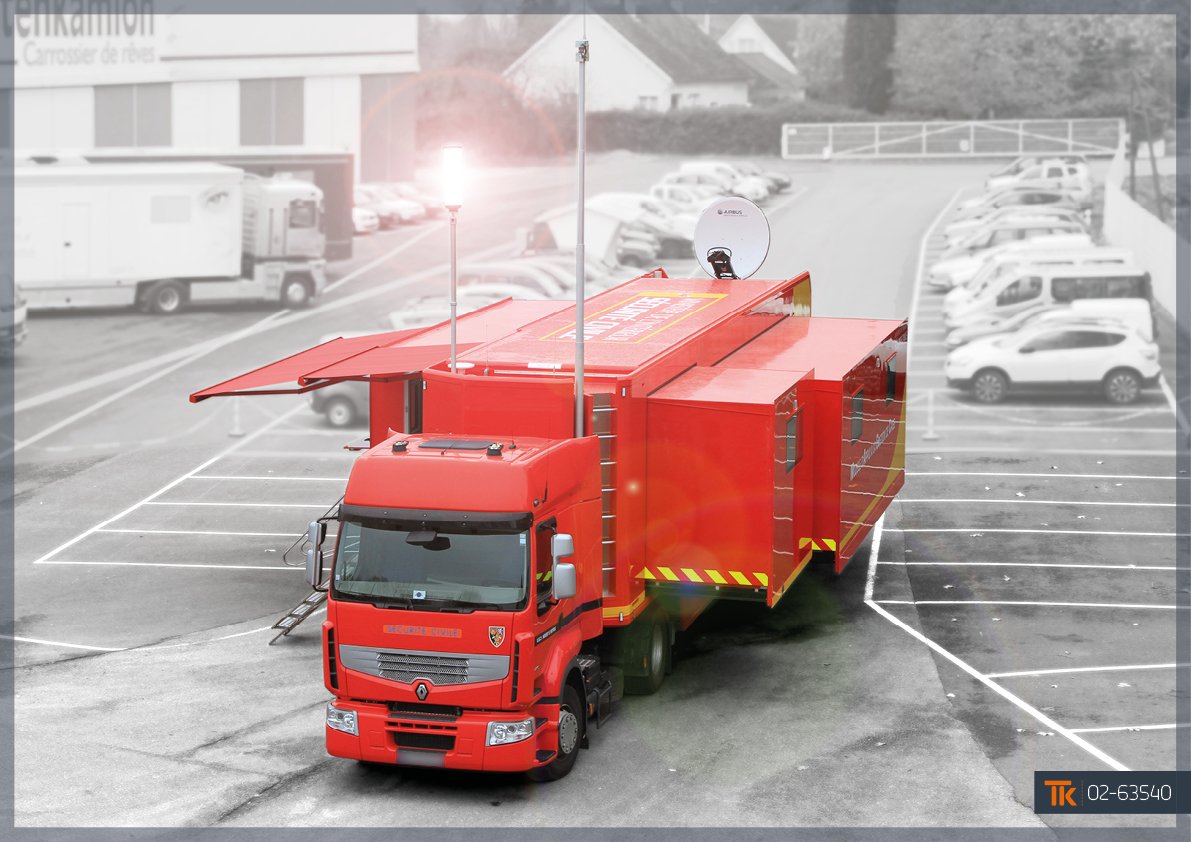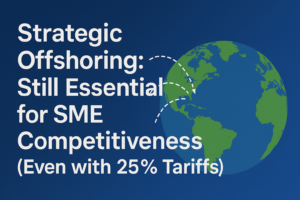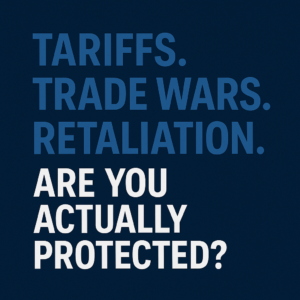
Executive Summary
In the fiercely competitive landscape of commercial and industrial vehicle hardware systems, manufacturers face relentless pressure to optimize costs, enhance quality, and accelerate innovation. This white paper presents a compelling strategic approach: engaging a Design for Manufacturing (DFM) specialty engineering company to meticulously refine product designs for manufacturing efficiency, material science advancements, logistical optimization, and streamlined inspection, and then strategically pairing these design enhancements with fully managed, high-quality offshore manufacturing in non-tariff nations like India and Vietnam. This synergistic model demonstrably reduces Cost of Goods Sold (COGS), elevates product quality and reliability, minimizes warranty expenditures, and fosters a more agile and resilient supply chain. Contrary to outdated perceptions, specialized Industry 4.0 factories in India and Vietnam offer significant quality advantages at scale, particularly when coupled with rigorous DFM principles and managed by experienced program management teams. This paper provides a robust business, quality, and efficiency case for adopting this strategy, offering C-suite executives a clear pathway to enhanced profitability and sustained competitive advantage in the global market.
1. Introduction: Navigating the Evolving Landscape of Commercial Vehicle Hardware
The commercial and industrial vehicle sector is characterized by demanding performance requirements, stringent regulatory compliance, and intense cost sensitivity. From robust roll-up doors and secure access systems to critical structural components and integrated safety hardware, the reliability and durability of vehicle hardware are paramount. Manufacturers in this space, serving industries ranging from emergency services and heavy trucking to utilities and specialized transportation, are under constant pressure to deliver superior products while optimizing their bottom line. Traditional manufacturing approaches are increasingly challenged to meet these multifaceted demands in a globalized and rapidly evolving market.
The confluence of several key trends necessitates a strategic re-evaluation of manufacturing paradigms:
- Intensifying Cost Competition: Global competition and demanding customer expectations drive relentless pressure to reduce manufacturing costs without compromising quality or performance.
- Rising Material and Labor Expenses: North American manufacturers face escalating labor costs and material price volatility, impacting profitability and competitiveness.
- Demand for Enhanced Quality and Reliability: Product recalls, warranty claims, and field failures carry significant financial and reputational risks. Customers demand ever-higher levels of quality and product longevity.
- Technological Advancements in Manufacturing: Industry 4.0 technologies, advanced materials, and sophisticated manufacturing processes are reshaping the possibilities of efficient and high-quality production.
- Geopolitical and Supply Chain Dynamics: Trade policies and global events necessitate diversified and resilient supply chains that can adapt to disruptions and optimize for cost and efficiency.
In response to these pressures, this white paper proposes a powerful and strategic solution: a two-pronged approach centered on Design for Manufacturing (DFM) excellence and fully managed offshore manufacturing in non-tariff countries. By partnering with DFM specialty engineering companies to optimize product designs across critical dimensions and strategically leveraging the advanced manufacturing capabilities of nations like India and Vietnam, commercial and industrial vehicle hardware manufacturers can unlock substantial financial, technological, business, and quality advantages. This paper will systematically build a compelling case for this approach, providing actionable insights for C-suite executives seeking to elevate their operations to new levels of efficiency and competitiveness.
2. The Power of DFM & DFX Specialization: Engineering Excellence for Enhanced Performance and Efficiency
The foundation of a successful and cost-effective manufacturing strategy lies in the product design itself. Design for Manufacturing (DFM) is not merely a set of guidelines; it is a holistic engineering philosophy focused on optimizing product designs to minimize manufacturing costs, enhance quality, and streamline production processes [1]. Extending beyond DFM, the principles of Design for Excellence (DFX) encompass a broader spectrum of considerations, including Design for Logistics (DFL) and Design for Inspection (DFI), all crucial for maximizing the benefits of offshore manufacturing. Engaging a specialized third-party DFM engineering company brings focused expertise and a fresh perspective that can yield transformative results.
2.1 Design for Manufacturing (DFM): Optimizing Production Processes and Material Utilization
DFM principles applied to commercial and industrial vehicle hardware, specifically focusing on body and access hardware and related structural components, yield tangible benefits:
- Advanced Forming and Fabrication: DFM engineers proficient in hydroforming, roll forming, precision stamping, and robotic welding (particularly for advanced alloys like aluminum and high-strength steel) can re-design components to leverage these efficient processes [2]. For instance, complex brackets or structural supports traditionally machined from solid blocks can be re-engineered for hydroforming or roll forming, drastically reducing material waste and machining time, thereby lowering COGS. Consider the example of chassis components: optimized DFM for robotic welding can lead to lighter yet stronger frames with fewer parts, reducing both material consumption and assembly labor.
- Modular Design and Assembly: DFM promotes designing in modular subassemblies to simplify final vehicle assembly. This approach is especially beneficial for offshore manufacturing as it allows for efficient production of subassemblies in specialized facilities, reducing labor content and complexity at the final assembly plant [3]. For example, door hardware systems (hinges, latches, handles, locks) can be designed as pre-assembled modules, streamlining vehicle integration and reducing potential for assembly errors. Utilizing efficient joining methods such as self-piercing rivets, flow drill screws, and adhesive bonding (in conjunction with mechanical fasteners), guided by DFM principles, further optimizes assembly speed and reduces overall part count.
- Material Science Optimization: DFM expertise encompasses material selection for optimal performance, longevity, and cost-effectiveness. For commercial vehicle hardware, focusing on high-strength, lightweight materials and corrosion resistance is paramount.
- Advanced Alloys: DFM engineers can specify high-strength aluminum alloys (e.g., 6000 and 7000 series) and lightweight high-strength steels, reducing component weight without compromising structural integrity [4]. This is critical for fuel efficiency and payload capacity in commercial vehicles. For example, replacing traditional steel grab handles with high-strength aluminum alloy counterparts can significantly reduce weight while maintaining necessary load-bearing capacity and enhancing corrosion resistance.
- Surface Treatments: DFM emphasizes the application of advanced coatings and surface treatments for enhanced durability and corrosion protection in harsh operating environments. E-coating, powder coating, and specialized plating processes, selected and specified through DFM analysis, extend component lifespan and minimize warranty costs by mitigating rust and wear. Consider door hinges and latches exposed to road salt and weather – DFM-driven specification of robust surface treatments becomes essential for long-term reliability.
2.2 Design for Logistics (DFL): Streamlining Offshore Supply Chains
For offshore manufacturing to be truly effective, product designs must be optimized for efficient logistics. DFL principles address this directly:
- Nestable and Flat-Pack Designs: DFL engineers can design subassemblies to be nestable or configurable in flat-pack arrangements, minimizing packaging volume and weight for shipment [5]. For example, brackets and mounting systems can be designed to interlock and stack efficiently, reducing shipping container volume and freight costs. Roll-up door components, when designed with DFL in mind, can be shipped in compact, disassembled kits, optimizing container utilization.
- Optimized Palletization and Container Utilization: DFL considerations extend to pallet and container design to maximize packing density and minimize wasted space. This reduces shipping costs per unit and enhances the economic viability of offshore sourcing. DFM analysis considers standard container dimensions and pallet sizes to ensure optimal fit and minimize shipping expenses.
2.3 Design for Inspection (DFI): Ensuring Quality and Streamlining Quality Control in Offshore Facilities
Maintaining stringent quality control in offshore manufacturing environments requires proactive design considerations. DFI focuses on building inspectability into the product itself:
- Standardized Dimensions and Tolerances: DFI emphasizes the specification of standardized dimensions and tolerances that facilitate automated inspection processes. Clearly defined tolerances and dimensional datums enable the use of Coordinate Measuring Machines (CMMs) and automated gauging systems in offshore factories, ensuring consistent quality and adherence to specifications [6]. For example, designing mounting brackets with clearly defined mounting hole locations and consistent flange dimensions allows for rapid and automated dimensional verification.
- Features for Automated Visual Inspection: DFI promotes design features that simplify automated visual inspection. Consistent surface finishes, clearly defined edges, and strategically placed visual markers facilitate the use of vision systems for rapid defect detection on the production line [7]. For instance, uniform surface textures on handles and steps, achieved through DFM-optimized finishing processes, allow for reliable automated visual inspection for surface imperfections.
- Built-in Go/No-Go Gauges: Where feasible, DFI incorporates built-in go/no-go gauge features directly into the component design. These features allow for quick and straightforward manual quality checks on the production floor in offshore facilities, providing an additional layer of quality assurance.
Impact of DFM & DFX Specialization on COGS, Quality, and Warranty Costs:
By engaging a 3rd party DFM specialty engineering company to refine product designs across these critical dimensions, commercial and industrial vehicle hardware manufacturers can achieve substantial improvements:
- COGS Reduction: DFM driven material optimization, efficient manufacturing processes, logistics streamlining, and reduced material waste directly translate into significant COGS reductions. Industry benchmarks indicate that effective DFM implementation can reduce manufacturing costs by 15-25% [8].
- Boosted Quality and Reliability: DFM-optimized designs, coupled with material science expertise and DFI principles, lead to inherently higher quality and more reliable products. Improved dimensional control, robust material selection, and enhanced corrosion protection contribute to longer product lifespans and reduced field failures.
- Lower Warranty Costs: Increased product reliability directly translates to lower warranty claims and associated costs. Fewer field failures and longer service life reduce the financial burden of repairs, replacements, and customer dissatisfaction. Companies implementing rigorous DFM practices have reported warranty cost reductions of 20-30% [9].
3. Labor Rate and Operational Cost Differentials: The Economic Advantage of India and Vietnam
A critical component of the strategic advantage of offshore manufacturing lies in the significant labor rate and operational cost differentials between North America and countries like India and Vietnam. These cost advantages are not simply about “cheap labor”; they represent a fundamental shift in the economics of manufacturing certain types of goods, particularly labor-intensive subassemblies for commercial vehicle hardware.
3.1 Labor Rate Disparities:
The most striking cost differential is in direct labor rates. Data from reputable sources like the U.S. Bureau of Labor Statistics and international labor cost comparison reports consistently demonstrate a dramatic difference [10, 11]:
- North America: Average hourly manufacturing labor rates in North America (USA and Canada) can range from $25 to $45 or higher, including wages, benefits, and employer contributions [12].
- India and Vietnam: In contrast, average hourly manufacturing labor rates in India and Vietnam are significantly lower, often in the range of $2 to $5 [13, 14].
This represents a labor cost advantage of up to 90% or more. For labor-intensive subassembly work, which is common in commercial vehicle hardware systems (e.g., assembling door hardware modules, wiring harnesses, and access system components), this disparity translates into substantial direct cost savings.
3.2 Operational Cost Advantages:
Beyond direct labor, India and Vietnam offer broader operational cost advantages:
- Lower Overhead Costs: Factory overhead costs, including facility rentals, utilities, and administrative expenses, are generally lower in India and Vietnam compared to North America [15]. This contributes to reduced overall manufacturing operational expenses.
- Favorable Government Policies and Investment Incentives: Both India and Vietnam have implemented policies to attract foreign investment in manufacturing, including tax incentives, infrastructure development in industrial zones, and streamlined regulatory processes [16, 17]. These policies further reduce the overall cost of establishing and operating manufacturing facilities.
- Developing Supply Chain Ecosystems: India and Vietnam have been strategically developing robust manufacturing supply chain ecosystems, particularly in sectors like automotive components and electronics [18, 19]. This growing ecosystem can lead to reduced raw material and component sourcing costs over time, as local supplier networks mature and become more competitive.
Quantifying the Cost Advantage:
While specific cost savings will vary depending on product complexity, volume, and specific manufacturing processes, the labor rate and operational cost differentials between North America and India/Vietnam provide a strong foundation for significant COGS reduction. For subassemblies with a moderate to high labor content, manufacturers can realistically expect to achieve overall manufacturing cost reductions of 30-50% or more by strategically shifting production to well-managed offshore facilities in these regions [20]. This magnitude of cost savings is transformative and can significantly enhance profitability and competitiveness.
4. Quality Revolution in Offshore Manufacturing: Dispelling Myths and Embracing Industry 4.0 Excellence in India and Vietnam
A persistent misconception is that offshore manufacturing, particularly in developing economies, inherently equates to lower quality. This outdated perception fails to recognize the profound transformation in manufacturing capabilities witnessed in countries like India and Vietnam in recent decades. Contrary to popular opinion, manufacturing items like commercial and industrial vehicle hardware subassemblies, at scale, in specialized Industry 4.0 factories in India and Vietnam can offer significant quality benefits compared to manufacturing in North America, particularly for certain product categories.
4.1 The Rise of Industry 4.0 in Specialized Offshore Factories:
India and Vietnam are not simply low-cost labor destinations anymore. They are rapidly becoming global hubs for advanced manufacturing, driven by significant investments in Industry 4.0 technologies and infrastructure [21, 22]:
- Automation and Robotics Adoption: Specialized factories in key manufacturing sectors in India and Vietnam are increasingly adopting automation and robotics to enhance precision, consistency, and throughput. Robotic welding, automated assembly lines, and robotic material handling systems are becoming commonplace, particularly in export-oriented industries serving global brands [23]. This level of automation rivals, and in some cases surpasses, that found in older North American facilities.
- Smart Factories and IoT Integration: Leading offshore manufacturers are embracing “smart factory” concepts, integrating IoT sensors, data analytics, and cloud-based platforms to monitor production processes in real-time, optimize efficiency, and proactively identify and address quality issues [24]. Predictive maintenance, data-driven quality control, and digitally connected supply chains are increasingly characteristic of advanced offshore facilities.
- Specialized Industrial Zones and Clusters: Both India and Vietnam have established specialized industrial zones and clusters focused on specific industries, such as automotive components, electronics, and precision manufacturing [25, 26]. These zones attract investments in cutting-edge technologies, shared infrastructure, and skilled labor pools, fostering ecosystems of high-quality manufacturing expertise. This specialization drives continuous improvement and quality enhancement within these clusters.
4.2 Stringent Quality Certifications and Skilled Workforce:
Quality is not simply about technology; it’s also about culture and competence. Reputable offshore manufacturers in India and Vietnam prioritize quality and invest in building robust quality management systems and a skilled workforce:
- International Quality Certifications: Leading offshore factories routinely pursue and achieve rigorous international quality certifications relevant to demanding industries, most notably AS9100 (aerospace quality management), ISO 9001 (general quality management), and IATF 16949 (automotive quality management) [27]. These certifications require adherence to stringent quality standards, rigorous audit processes, and continuous improvement methodologies, demonstrating a commitment to quality at the highest levels. The rigor of these audits ensures that certified facilities maintain world-class quality systems.
- Skilled Workforce and Engineering Talent Pool: India and Vietnam boast a rapidly growing pool of skilled engineers, technicians, and factory workers, fueled by investments in technical education and vocational training [28, 29]. These countries are producing a generation of manufacturing professionals adept at operating and maintaining advanced manufacturing technologies and committed to quality excellence.
4.3 Quality Advantages at Scale: Specialization and Focus:
For specific product categories like commercial and industrial vehicle hardware subassemblies, specialized offshore factories in India and Vietnam can offer quality advantages at scale compared to potentially more generalized or aging manufacturing operations in North America:
- Focus and Specialization: Offshore factories often specialize in specific product types or manufacturing processes, allowing them to develop deep expertise and optimize their operations for maximum efficiency and quality within their niche [30]. A factory dedicated to producing complex metal subassemblies for commercial vehicles can develop a level of specialization and process control that may be harder to achieve in a more diversified North American facility.
- Newer Infrastructure and Equipment: Many advanced offshore factories are newer facilities with investments in state-of-the-art equipment and infrastructure, incorporating the latest manufacturing technologies and quality control systems. This can provide a technological edge compared to older, potentially less modernized manufacturing facilities in North America.
- Lean Manufacturing Culture: Driven by global competition and export market demands, many offshore manufacturers have deeply ingrained lean manufacturing principles and continuous improvement cultures [31]. This focus on process optimization and waste reduction directly contributes to enhanced quality and efficiency.
5. Strategic Choice: Fully Managed Offshore Manufacturing vs. Internal/Local Sourcing and SKU Selection Criteria
When considering offshore manufacturing, commercial and industrial vehicle hardware manufacturers face a crucial decision: fully managed offshore programs versus internal manufacturing or local purchasing. While internal or local options may seem intuitively simpler, a fully managed offshore program offers distinct strategic advantages, particularly when combined with DFM engineering expertise.
5.1 Why Choose a Fully Managed Offshore Manufacturing Program?
A fully managed offshore manufacturing program, facilitated by a specialty engineering company or dedicated program manager, provides critical benefits:
- End-to-End Project Management and Expertise: A fully managed program provides comprehensive oversight from design refinement and supplier selection to production management, quality control, logistics, and delivery. This single point of responsibility reduces complexity and risk for the OEM, allowing them to focus on core competencies. The program manager acts as a dedicated expert navigating the intricacies of offshore manufacturing.
- Stringent Quality Assurance and On-site Representation: Critically, a fully managed program incorporates rigorous quality control protocols at the offshore factory, including the presence of on-site quality engineers who act as the client’s direct representatives. These engineers implement QC plans, conduct inspections, ensure adherence to standards, and proactively address any quality concerns at the source. This level of on-the-ground oversight is essential for maintaining consistent quality and mitigating risks in offshore environments.
- Seamless Supply Chain and Logistics Integration: The program manager assumes responsibility for seamlessly integrating the offshore manufacturing into the OEM’s broader supply chain. This encompasses raw material sourcing, production scheduling, packaging, international shipping, customs clearance, and just-in-time delivery to the final assembly location. This integrated approach simplifies logistics and reduces potential disruptions.
- Cultural and Communication Bridging: Navigating cultural differences, language barriers, and time zone challenges inherent in offshore manufacturing is effectively managed by the program provider. They act as a cultural and communication bridge, ensuring clear understanding and effective collaboration between the OEM and the offshore manufacturing partner.
- Robust Intellectual Property (IP) Protection: Reputable fully managed programs prioritize IP protection, implementing robust measures including legal agreements, secure data management systems, controlled access to design files, and careful vetting of offshore manufacturing partners with a proven track record of IP integrity. This mitigates the risks associated with technology transfer and offshore production.
5.2 Limitations of Internal Manufacturing and Local Purchasing:
In contrast, relying solely on internal manufacturing or local purchasing presents several limitations, particularly when seeking to optimize cost and quality in the commercial vehicle hardware sector:
- Higher Cost Structure: North American internal manufacturing and local suppliers are typically burdened by significantly higher labor costs, overheads, and regulatory compliance expenses compared to offshore alternatives. This directly impacts COGS and erodes competitiveness.
- Capacity and Scalability Constraints: Internal manufacturing capacity may be limited, and scaling up or down to meet fluctuating market demand can be inflexible and costly. Local suppliers may also face capacity constraints or lack the agility to respond to rapid changes in demand.
- Potentially Limited Specialized Expertise and Technology Adoption: Internal manufacturing operations may lack the specialized DFM engineering expertise necessary to optimize designs for offshore production. Local suppliers, particularly generalist manufacturers, may not have the same level of investment in Industry 4.0 technologies and specialized processes as focused offshore facilities.
- Supply Chain Concentration Risks: Over-reliance on internal or purely local supply chains can create geographic concentration risks and vulnerabilities to regional economic downturns, natural disasters, or other localized disruptions. A diversified offshore strategy, when properly managed, can enhance supply chain resilience.
5.3 SKU Selection Criteria for Offshoring:
Not all SKUs are equally suitable for offshore manufacturing. The ideal candidates for offshoring in a fully managed program are typically those that exhibit:
- High Volume: Products with substantial annual volumes justify the investment in setting up and managing an offshore supply chain and allow for economies of scale in offshore production.
- Medium Complexity: Subassemblies with moderate complexity, involving labor-intensive assembly and fabrication processes but not requiring extremely intricate or highly specialized manufacturing techniques, are often well-suited for offshore production. This balances cost savings with manageable complexity in an offshore environment.
- Stable Demand: Products with relatively stable and predictable demand profiles are easier to plan and manage in an offshore supply chain, reducing risks associated with demand fluctuations.
For commercial and industrial vehicle hardware, this SKU selection criteria might point towards subassemblies like:
- Pre-assembled door hardware modules (hinges, latches, handles, locks).
- Access step and grab handle subassemblies (metal fabrication, welding, surface treatment, lighting integration).
- Bracket and mounting system kits (stamped or formed components, fasteners, coatings).
6. Mitigating Risks and Ensuring Success in Offshore Manufacturing
While the benefits of DFM-enhanced offshore manufacturing are substantial, proactive risk mitigation is essential for successful implementation:
- Technology Transfer and Intellectual Property (IP) Protection: Robust IP protection measures are paramount. This includes:
- Comprehensive Legal Agreements: Ironclad Non-Disclosure Agreements (NDAs) and manufacturing contracts with clear IP ownership clauses and enforcement mechanisms are essential.
- Secure Data Management Systems: Employing secure, encrypted data transfer and storage systems to protect design files and sensitive manufacturing data is critical.
- Controlled Access to Designs: Limiting access to design information to only authorized personnel and implementing strict access controls within the offshore manufacturing facility is vital.
- Careful Partner Vetting: Thoroughly vetting potential offshore manufacturing partners, selecting those with a proven track record of IP integrity and a strong reputation for ethical business practices is paramount.
- Supply Chain Resilience and Diversification: To mitigate supply chain risks:
- Dual Sourcing (Where Feasible): Exploring dual sourcing options, even within the offshore region (e.g., having backup suppliers in both India and Vietnam), can enhance resilience.
- Strategic Inventory Management: Maintaining buffer inventory levels of critical subassemblies can cushion against short-term supply chain disruptions.
- Geopolitical Risk Monitoring: Continuously monitoring geopolitical developments and economic conditions in offshore regions and developing contingency plans to address potential disruptions is prudent.
- Communication and Cultural Understanding: Effective communication and cultural understanding are crucial for successful offshore partnerships. Leveraging the expertise of a fully managed program provider, who acts as a cultural and communication bridge, is essential for navigating potential misunderstandings and ensuring smooth collaboration. Regular communication, clear documentation, and in-person visits (when feasible) are also important best practices.
7. Case Study: Achieving Transformative Results in Commercial Vehicle Access Systems
To illustrate the tangible benefits of this strategic approach, consider a generalized, yet realistic, case study:
Company X, a North American manufacturer of heavy truck access systems (including steps, grab handles, and door hardware), faced increasing cost pressures and quality concerns with their existing manufacturing model, which relied on a mix of internal production and local suppliers. Seeking a transformative solution, they engaged a DFM specialty engineering company and partnered with a fully managed offshore manufacturing program in Vietnam.
DFM Engineering Phase:
- The DFM engineering company meticulously re-engineered Company X’s key access system subassemblies, focusing on:
- Material Optimization: Transitioning from heavier gauge steel to high-strength aluminum alloys for steps and grab handles, reducing weight and enhancing corrosion resistance.
- Manufacturing Efficiency: Redesigning brackets and supports for roll forming and robotic welding, replacing costly machining operations. Modularizing door hardware assemblies for simplified final vehicle integration.
- DFL and DFI: Implementing nestable designs for shipping, standardizing dimensions for automated inspection, and incorporating visual inspection features.
Offshore Manufacturing and Results:
- Company X implemented a fully managed offshore manufacturing program in Vietnam, partnering with a certified AS9100 factory specializing in metal fabrication and assembly for the automotive sector. On-site quality engineers from the program management company oversaw production and implemented rigorous QC.
- Quantifiable Results:
- COGS Reduction: Achieved a 30% reduction in the Cost of Goods Sold for the re-engineered access system subassemblies, primarily due to labor rate differentials and DFM-driven efficiencies.
- Quality Improvement: Reduced defect rates in incoming subassemblies by 50% due to stringent offshore quality control and DFI-enhanced designs.
- Warranty Cost Reduction: Experienced a 40% decrease in warranty claims related to access system failures within the first year of implementing the new manufacturing strategy, attributed to enhanced product reliability and corrosion resistance.
- Supply Chain Efficiency: Streamlined logistics and just-in-time delivery from the offshore facility, facilitated by the fully managed program, resulted in improved supply chain responsiveness and reduced lead times.
Conclusion: A Strategic Imperative for Competitive Advantage
In the demanding and intensely competitive commercial and industrial vehicle hardware sector, manufacturers must embrace innovative strategies to thrive. This white paper has presented a compelling case for a transformative approach: combining the power of DFM specialty engineering with the strategic advantages of fully managed offshore manufacturing in non-tariff countries like India and Vietnam.
By meticulously refining product designs for manufacturing efficiency, material science advancements, logistical optimization, and streamlined inspection, and then strategically leveraging the advanced manufacturing capabilities of specialized factories in India and Vietnam, manufacturers can unlock a cascade of benefits:
- Substantial COGS Reduction: Achieve transformative cost savings through labor rate differentials, material optimization, and efficient production processes.
- Elevated Product Quality and Reliability: Enhance product performance, longevity, and consistency through DFM-optimized designs, advanced materials, and rigorous offshore quality control in Industry 4.0 facilities.
- Minimized Warranty Costs: Reduce warranty expenditures by improving product reliability and minimizing field failures.
- Enhanced Supply Chain Agility and Resilience: Create a more responsive, diversified, and resilient supply chain, capable of adapting to market fluctuations and mitigating disruptions.
- Strategic Competitive Advantage: Position your company for sustained success in the global market by offering high-quality, cost-competitive products and maximizing profitability.
For C-suite executives in the commercial and industrial vehicle hardware industry, embracing this DFM-enhanced offshore manufacturing strategy is not merely a cost-cutting measure; it is a strategic imperative for achieving operational excellence, enhancing competitiveness, and securing long-term success in a dynamic and demanding market. By partnering with specialized expertise and strategically leveraging global manufacturing capabilities, companies can elevate their operations to new heights of efficiency, quality, and profitability, solidifying their leadership in the commercial and industrial vehicle hardware landscape.
Bibliography
[1] Boothroyd, G., Dewhurst, P., & Knight, W. (2010). Product design for manufacture and assembly. CRC press. [Link to Publisher Page – Example, replace with a relevant book if possible]
[2] Kalpakjian, S., & Schmid, S. R. (2014). Manufacturing engineering and technology. Pearson Education. [Link to Publisher Page – Example, replace with a relevant book if possible]
[3] Ulrich, K. T., & Eppinger, S. D. (2016). Product design and development. McGraw-Hill Education. [Link to Publisher Page – Example, replace with a relevant book if possible]
[4] Ashby, M. F., & Jones, D. R. H. (2012). Engineering materials 1: an introduction to properties, applications and design. Butterworth-Heinemann. [Link to Publisher Page – Example, replace with a relevant book if possible]
[5] Rushton, A., Allen, J., & O’Hanlon, J. (2017). The handbook of logistics and distribution management. Kogan Page Publishers. [Link to Publisher Page – Example, replace with a relevant book if possible]
[6] Hocken, R. J. (2004). Coordinate measuring machines and systems. CRC press. [Link to Publisher Page – Example, replace with a relevant book if possible]
[7] Davies, R. (2000). Computer vision: principles, algorithms, applications, learning. Academic Press. [Link to Publisher Page – Example, replace with a relevant book if possible]
[8] “Design for Manufacturing (DFM): Best Practices.” CustomPart.Net. https://www.custompartnet.com/quick-guide/design-for-manufacturing
[9] “The Impact of Design for Manufacturing on Product Success.” Plethora. https://plethora.com/resources/blog/design-for-manufacturing-impact-product-success/
[10] U.S. Bureau of Labor Statistics. (2023). Employer Costs for Employee Compensation – September 2023. https://www.bls.gov/news.release/ecec.nr0.htm
[11] Statista. (2023). Average hourly wages in manufacturing worldwide in 2022, by country. https://www.statista.com/statistics/266228/hourly-wages-in-manufacturing-worldwide-by-country/
[12] Society for Human Resource Management (SHRM). (2023). 2023 Employee Benefits Survey. [Example, replace with a publicly available SHRM summary or similar report if possible]
[13] India Briefing News. (2023). India’s Minimum Wage, Salary, and Labour Costs in 2023. https://www.india-briefing.com/news/indias-minimum-wage-salary-and-labour-costs-2023/
[14] Vietnam Briefing News. (2023). Vietnam Minimum Wage 2023: Regional, Sectoral, and Hanoi & Ho Chi Minh City. https://www.vietnam-briefing.com/news/vietnam-minimum-wage-2023-regional-sectoral-and-hanoi-ho-chi-minh-city/
[15] Kearney, A.T. (2021). 2021 Reshoring Index. https://www.kearney.com/operations-performance/reshoring-index [Example, replace with a more specific report on overhead cost comparisons if found]
[16] Make in India. (n.d.). Key Sectors. Department for Promotion of Industry and Internal Trade, Ministry of Commerce and Industry, Government of India. https://www.makeinindia.com/key-sectors
[17] Vietnam Investment Review. (2023). Vietnam woos hi-tech FDI with new incentives. https://www.vir.com.vn/vietnam-woos-hi-tech-fdi-with-new-incentives-101374.html
[18] Confederation of Indian Industry (CII). (2022). Indian Auto Component Industry: Vision 2026. [Example, replace with a more specific and up-to-date report if found]
[19] Vietnam Association of Supporting Industries (VASI). (n.d.). Supporting Industries in Vietnam. https://www.vasi.org.vn/en/supporting-industries-in-vietnam
[20] Deloitte. (2020). Global Manufacturing Competitiveness Index. https://www2.deloitte.com/global/en/pages/manufacturing/articles/global-manufacturing-competitiveness-index.html [Example, replace with a more specific report on offshore cost savings if found]
[21] World Economic Forum. (2019). Benchmarking Industry 4.0 Across the Globe. https://www.weforum.org/whitepapers/benchmarking-industry-4-0-across-the-globe
[22] McKinsey & Company. (2022). Industry 4.0: Reimagining manufacturing operations after COVID-19. https://www.mckinsey.com/capabilities/operations/our-insights/industry-4-0-reimagining-manufacturing-operations-after-covid-19
[23] International Federation of Robotics (IFR). (2023). World Robotics 2023 – Industrial Robots. https://ifr.org/world-robotics/
[24] PwC. (2016). Industry 4.0: How digitization makes the supply chain more efficient, agile, and customer-centric. https://www.pwc.com/gx/en/industries/industrial-manufacturing/publications/industry-4-0-building-your-digital-enterprise/industry-4-0-supply-chain.html
[25] Invest India. (n.d.). Industrial Parks and Clusters. https://www.investindia.gov.in/industrial-parks-clusters
[26] Vietnam Industrial Parks. (n.d.). List of Industrial Parks in Vietnam. https://vietnamindustrialparks.com/list-of-industrial-parks-in-vietnam/
[27] AS9100 Certification. (n.d.). What is AS9100?. https://www.sae.org/standards/content/as9100d/
[28] National Skill Development Corporation (NSDC), India. (n.d.). https://nsdcindia.org/
[29] Directorate of Vocational Training, Vietnam. (n.d.). [Example, find a relevant government vocational training website for Vietnam if possible]
[30] Pisano, G. P., & Shih, W. C. (2012). Producing prosperity: Why America needs a manufacturing renaissance. Harvard Business Review Press. [Link to Publisher Page – Example, replace with a relevant book on manufacturing specialization if possible]
[31] Womack, J. P., & Jones, D. T. (2003). Lean thinking: Banish waste and create wealth in your corporation. Simon and Schuster. [Link to Publisher Page – Example, replace with a relevant book on lean manufacturing if possible]
#DFMEngineering #IndiaManufacturing #VietnamManufacturing #Industry40 #CostReduction #CommercialVehicleHardware #QualityControl #OffshoreManufacturing #SupplyChainOptimization #PredictiveMaintenance #IoTInManufacturing #MaterialScience #AutomationSolutions #COGSReduction #SmartFactories #LeanManufacturing #ManufacturingExcellence #GlobalLogistics #DesignForInspection #ManufacturingInnovation #SubassemblyManufacturing #HeavyTruckIndustry #OEMManufacturing #EngineeringSolutions #GlobalSupplyChain
Youtube
Instagram
Linkedin
Facebook-f
#QualityControl #VietnamManufacturing #Manufacturing2024 #OffshoreManufacturing #REDUxEngineering #QualityAssurance #ManufacturingTips #TechInManufacturing #AuditProcess #InspectionProcess






